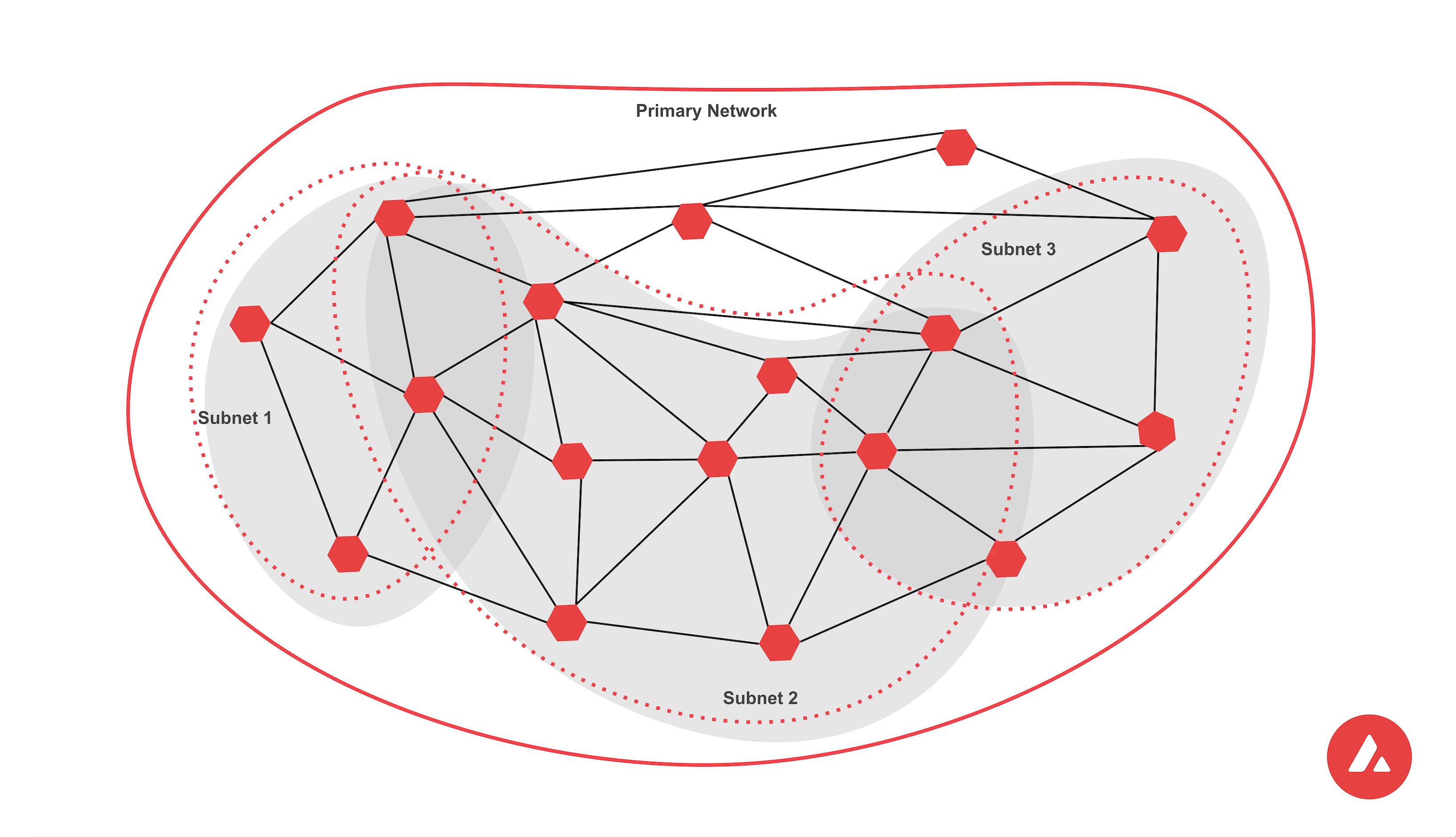Multi-Chain Architecture
A review of Avalanche's Multi-Chain Architecture
Subnets/L1s vs Chains
It's important to understand that a Subnet or L1 is a validator set, while a chain is an individual blockchain instance:
- Subnet/L1: A group of validators that can validate multiple blockchains
- Chain: A single blockchain validated by exactly one Subnet
While technically one Subnet can validate multiple chains (like the Primary Network validating P-Chain, C-Chain, and X-Chain), in production it's almost always a 1:1 relationship, and we strongly recommend keeping it as such for:
- Simpler management
- Resource isolation: Each application gets dedicated validator resources, and in the scenario that multiple validators go down, at least only one chain will be affected.
Subnets
Subnets are blockchains validated by a subset of Primary Network validators.
Key technical characteristics:
- Validators must be Primary Network validators (2,000 AVAX stake requirement)
- Validators sync and validate the entire Primary Network (X, P, C chains) - takes longer to sync
- Validator set is constrained to existing Primary Network participants

L1s
L1s are blockchains with sovereign validator sets independent of the Primary Network.
Key technical characteristics:
- Validators form their own independent validator set
- Validators pay continuous fees (~1.33 AVAX/month)
- Validators only sync the P-Chain, not the entire Primary Network (faster synce time)
- No dependency on Primary Network validator participation
In the Subnet Creation section we will cover how to create an Subnet using Avalanche's Developer Console. To learn more about this architecture transition and the ACPs that enabled it, check out the ETNA upgrade.
Is this guide helpful?


